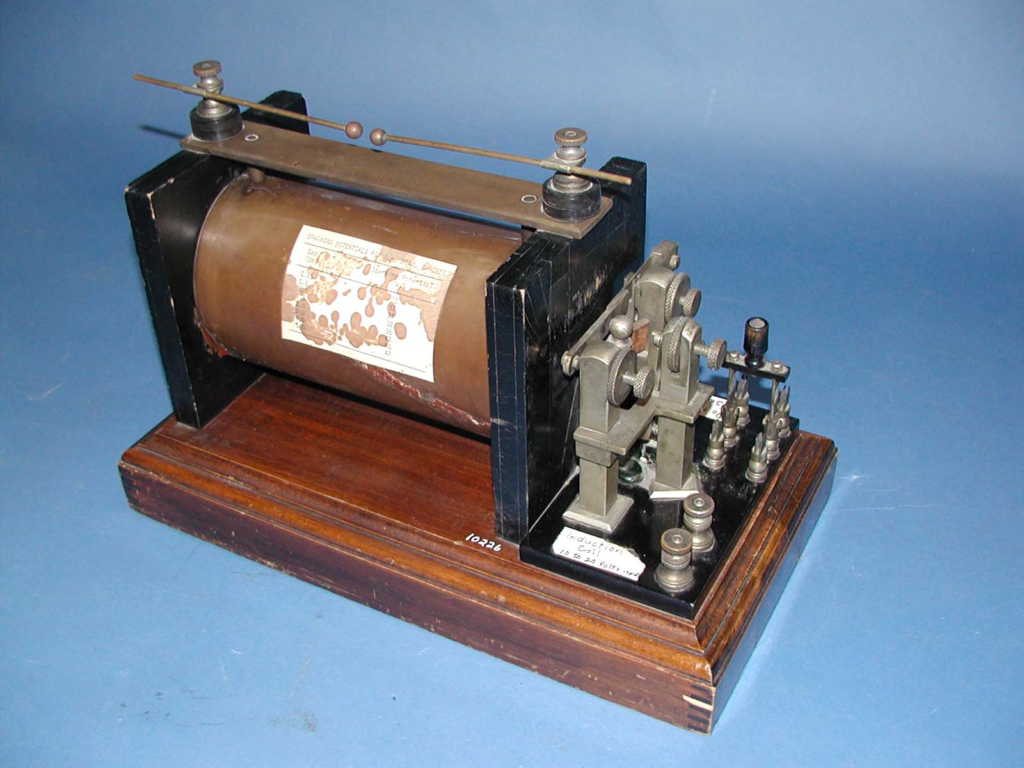Induction coil : Learn how induction coils are used for heating applications and the principles behind their operation.
Induction coil : Introduction
Induction coil : In the realm of electronics, few inventions have sparked as much innovation and discovery as the induction coil. An ingenious creation, it serves as the catalyst for generating intermittent high voltages, laying the foundation for numerous technological breakthroughs. Let us embark on a journey through its evolution, from the pioneering insights of Michael Faraday to the revolutionary experiments of Nikola Tesla.
ALSO READ : High-Tech Vape Detectors : A Modern Solution To Combat Rising Vaping Incidents

The birth of induction coils : Faraday’s legacy
Induction coil : The genesis of the induction coil dates back to 1831 when Michael Faraday unveiled his groundbreaking principle of electromagnetic induction. Faraday’s law, a cornerstone of electromagnetism, revealed that a changing magnetic field induces an electromotive force within a coil. This profound insight laid the groundwork for the development of the induction coil.
At its core, an induction coil comprises a central soft iron core encircled by two insulated coils: a primary coil with fewer turns of copper wire and a secondary coil with a multitude of turns of thinner wire. These coils, in conjunction with an interrupter, orchestrate the transformation of electrical energy into a powerful magnetic field.

The dynamics of operation
Induction coil : When a current is initiated in the primary coil, induced electromotive forces manifest in both the primary and secondary coils. However, the opposing electromotive force in the primary coil causes the current to rise gradually, minimizing the induced voltage in the secondary coil. Conversely, when the primary current is interrupted, a rapid reduction in the magnetic field ensues, resulting in a surge of voltage in the secondary coil.
This surge, often reaching tens of thousands of volts, is transient, lasting only momentarily as the magnetic field fluctuates. The frequency of these oscillations is governed by the interrupter, dictating the pulse rate of the induced voltage.

Evolution and refinement
Since Faraday’s seminal revelation, the induction coil has undergone continuous refinement and enhancement. In 1853, Armand-Hippolyte-Louis Fizeau introduced capacitors to expedite the interruption of the primary current, optimizing the efficiency of the coil.
Further innovations in coil winding techniques by pioneers such as Heinrich Daniel Ruhmkorff, Alfred Apps, and Friedrich Klingelfuss paved the way for unprecedented advancements. Klingelfuss, in particular, achieved sparks in air measuring an impressive 150 centimeters, showcasing the immense potential of induction coils.

Enter Nikola Tesla : A visionary’s contribution
Nikola Tesla, the visionary inventor renowned for his contributions to electrical engineering, recognized the transformative power of induction coils. In his Colorado Springs laboratory, Tesla harnessed the capabilities of induction coils to construct his famed “magnifying transmitter,” capable of generating millions of volts of electricity. This monumental achievement heralded a new era of electrical experimentation and exploration.

Applications and legacy
The applications of induction coils are multifaceted and far-reaching. From the discovery of cathode rays and X-rays to the ignition systems of gasoline engines, their impact spans across diverse fields of science and technology. The advent of smaller induction coils in the 21st century continues to underscore their significance as a vital component in modern electronics.

Conclusion
In the annals of scientific history, the induction coil stands as a testament to human ingenuity and innovation. From Faraday’s foundational insights to Tesla’s visionary experiments, its evolution epitomizes the relentless pursuit of knowledge and progress. As we continue to unlock its mysteries, the induction coil remains a beacon of inspiration, illuminating the path towards new frontiers of discovery.
To explore more news : Click Here
ALSO READ : Unlocking The Wonders Of Tesla Coil Electronics




































